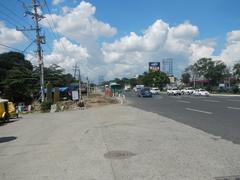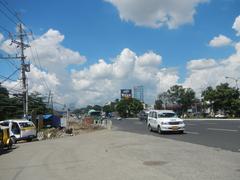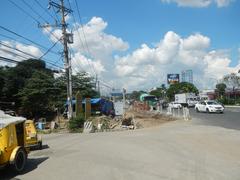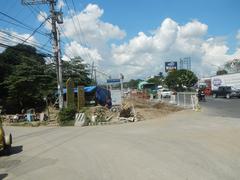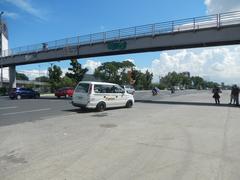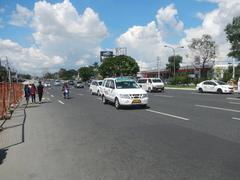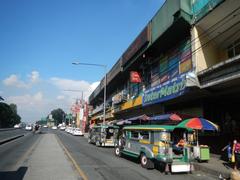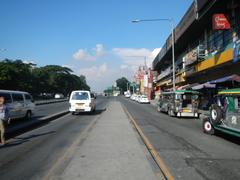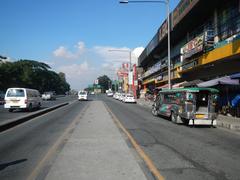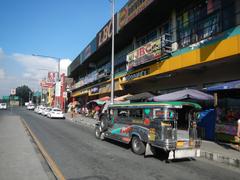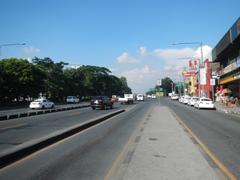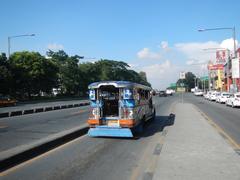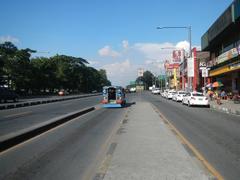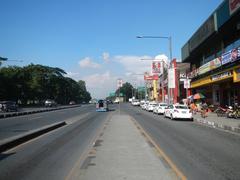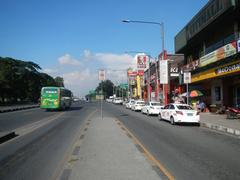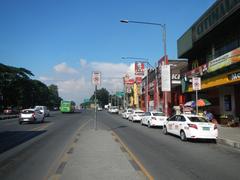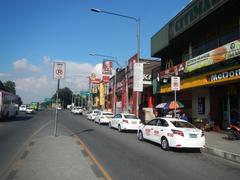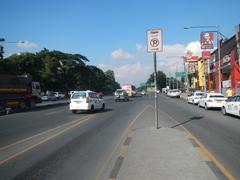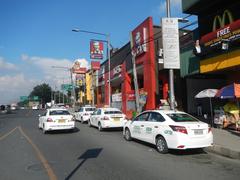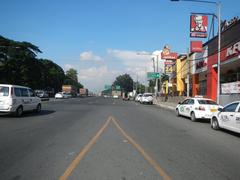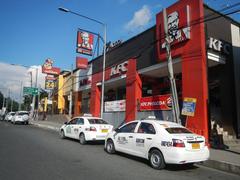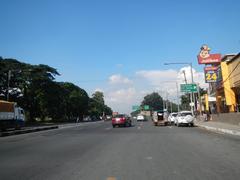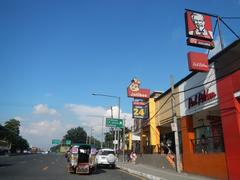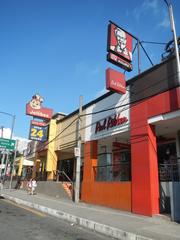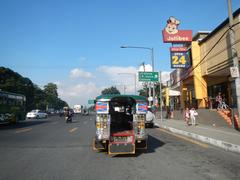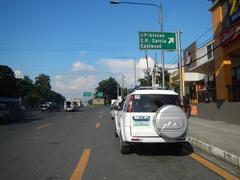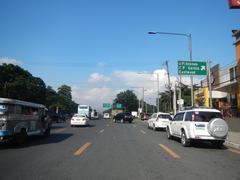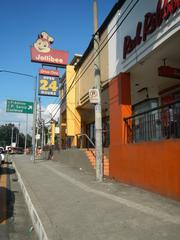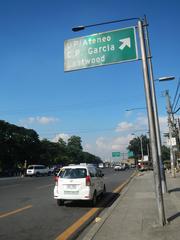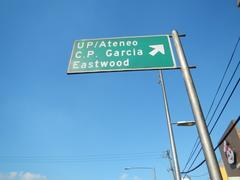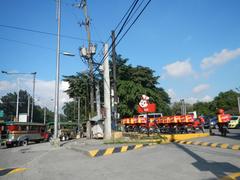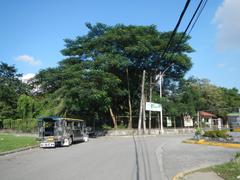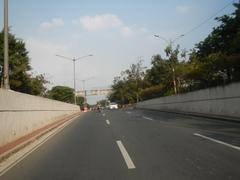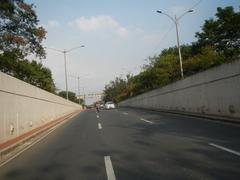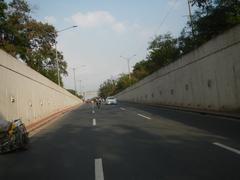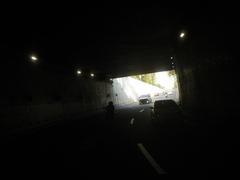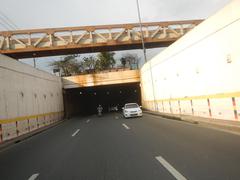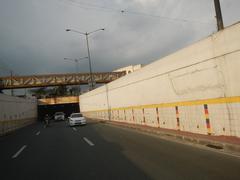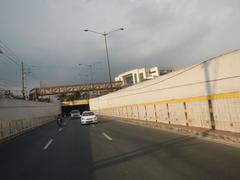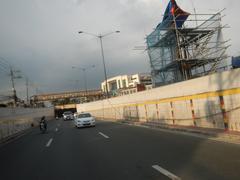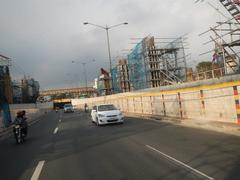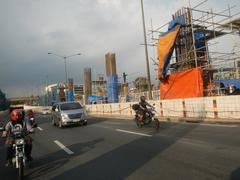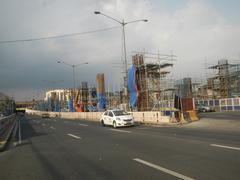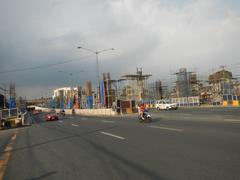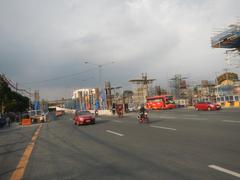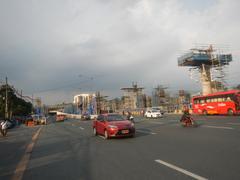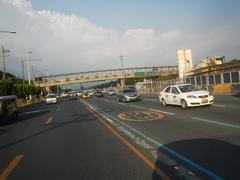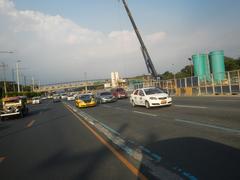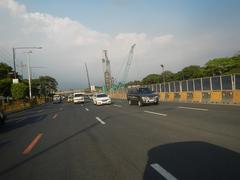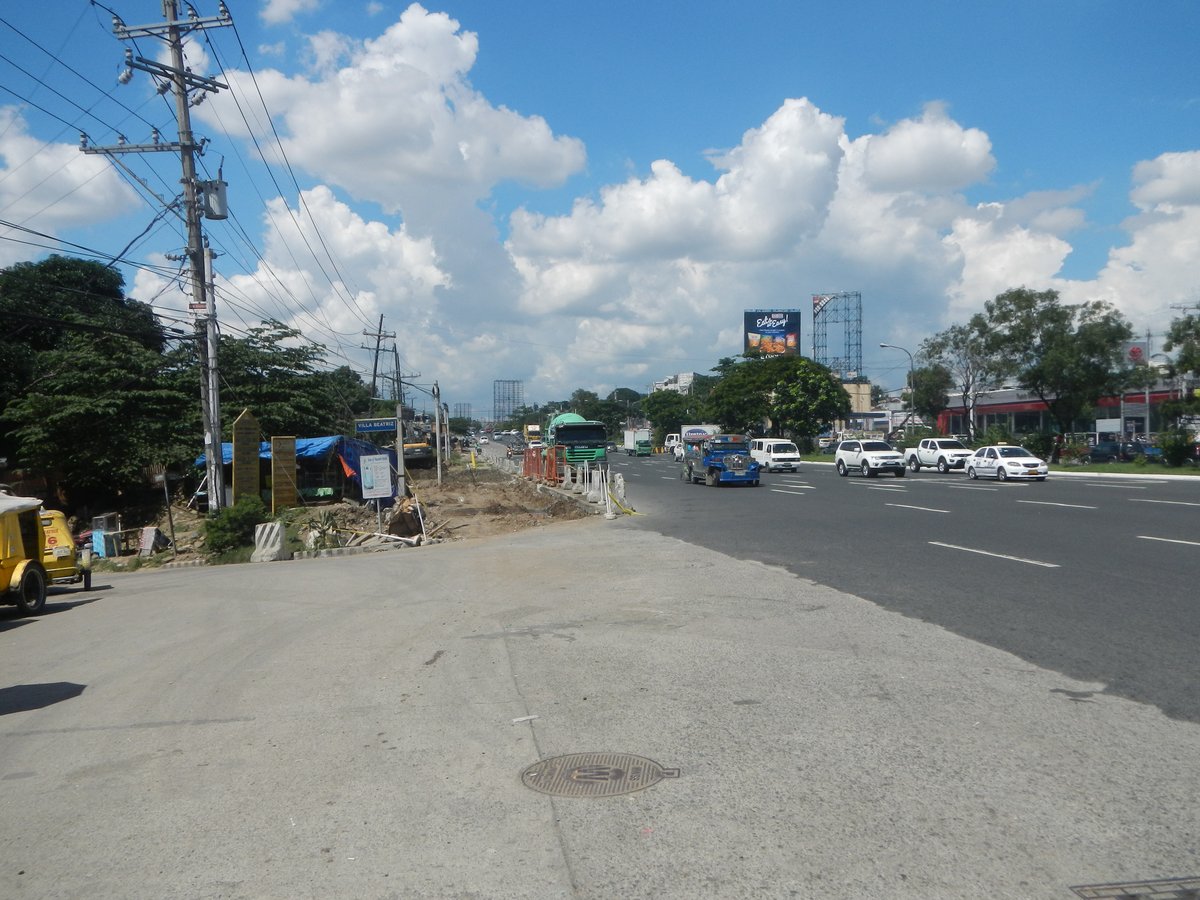
Commonwealth Avenue, Metro Manila, Philippines: Visiting Hours, Tickets, and Historical Sites Guide
Date: 14/06/2025
Introduction
Commonwealth Avenue, often dubbed the “killer highway” due to its immense width and heavy traffic, is a major thoroughfare in Quezon City, Metro Manila. More than just a road, Commonwealth Avenue embodies the city’s visionary beginnings, urban expansion, and evolving cultural landscape. This guide offers a comprehensive overview of its history, planning, key landmarks, visitor information, travel tips, and nearby attractions. Whether you are a history enthusiast, a local explorer, or a tourist, you’ll find everything you need to make the most of your visit to this iconic Philippine avenue.
Table of Contents
- Introduction
- Origins of Commonwealth Avenue: Planning and Naming
- Development Timeline and Urban Expansion
- Urban Planning Ideals and Realities
- Key Landmarks and Institutional Presence
- Visiting Commonwealth Avenue: Practical Information
- Transportation and Future Developments
- Frequently Asked Questions (FAQs)
- Conclusion
- Explore More
- References
Origins of Commonwealth Avenue: Planning and Naming
Commonwealth Avenue’s roots are deeply intertwined with the grand urban vision for Quezon City, conceived in 1939 as the Philippines’ planned future capital. The city’s master plan—crafted by American architect Harry T. Frost and Filipino collaborators like Juan Arellano—was inspired by the City Beautiful movement, emphasizing grand boulevards and civic spaces. Commonwealth Avenue was designed as a central artery radiating from a core quadrangle, symbolizing progress and national unity. Its name honors the Commonwealth Era (1935–1946), a pivotal period that laid the groundwork for Philippine independence and self-governance (Quezon City Government; Lakbay ng Lakan; IIAS Newsletter).
Development Timeline and Urban Expansion
Early Development (1960s–1980s)
While Quezon City’s blueprint was established in the 1940s, the construction of Commonwealth Avenue began later, in the late 1960s. The avenue was initially developed to connect Novaliches, the city’s northernmost district, to burgeoning residential and governmental hubs. The road’s generous width reflected ideals of modernity and accessibility, accommodating both vehicular and pedestrian traffic (Lakbay ng Lakan). During this era, Quezon City became a haven for post-war settlers, with neighborhoods ranging from affordable housing for government workers to well-off residential enclaves (Esquire Magazine).
Modernization and Infrastructure Growth (1990s–Present)
By the 1990s, Commonwealth Avenue had evolved into one of Metro Manila’s busiest and widest roads, reaching up to 18 lanes in some sections. Its sheer size and high accident rates led to the “killer highway” moniker (Medium). The avenue became lined with residential subdivisions, commercial centers, government offices, and educational institutions—serving as a lifeline for the city’s north-south movement.
Urban Planning Ideals and Realities
The City Beautiful Movement and Filipino Innovations
Commonwealth Avenue exemplifies the City Beautiful movement’s influence on Quezon City’s layout, while also incorporating Filipino innovations. The goal was to foster civic pride, accessibility, and public engagement, with the avenue acting as a connecting thread between diverse communities and institutions (IIAS Newsletter).
Socio-Spatial Dynamics
The avenue traverses a patchwork of middle-class subdivisions, government housing projects, and informal settlements. This diversity reflects the original vision of Quezon City as a city for all Filipinos but also underscores ongoing challenges in urban equity and the privatization of public space (Academia.edu; Esquire Magazine).
Key Landmarks and Institutional Presence
Commonwealth Avenue hosts major government institutions, including the Sandiganbayan (anti-graft court), Philippine Coconut Authority, and the Commission on Audit (Medium). It is also the gateway to the University of the Philippines Diliman, a premier university, and the Quezon Memorial Circle—an iconic park and monument dedicated to President Manuel L. Quezon (Quezon City Government).
Other notable attractions accessible from or near Commonwealth Avenue include:
- Tales of Illumina: An immersive walk-through exhibit celebrating Philippine mythology, located within Ever Gotesco Commonwealth mall (Island Times).
- Local Markets and Malls: Shopping centers and eateries lining the avenue offer a glimpse of everyday city life.
Visiting Commonwealth Avenue: Practical Information
Visiting Hours and Accessibility
- Commonwealth Avenue: Open to the public 24/7 as a major city road.
- Quezon Memorial Circle: Generally open daily from 6:00 AM to 10:00 PM.
- University of the Philippines Diliman: Open during business hours; guided tours are available by appointment.
- Other Attractions: Check individual sites for specific hours.
The avenue is accessible via private vehicles, taxis, jeepneys, buses, motorcycles, and bicycles. Pedestrian infrastructure varies; always use overpasses and exercise caution.
Travel Tips for Visitors
- Safety: Use pedestrian overpasses and crosswalks; traffic can be intense.
- Best Times to Visit: Early morning or late evening for lighter traffic.
- Nearby Attractions: Explore Quezon Memorial Circle, UP Diliman, local markets, and malls.
- Parking: Available in shopping centers and select public areas.
Tickets and Entry Fees
- Commonwealth Avenue: No entrance fee.
- Quezon Memorial Circle Museums: Modest fees may apply (typically PHP 50–100).
- Tales of Illumina: Discounted tickets at Php 499 until March 30, 2025 (Island Times).
Special Events and Guided Tours
- Quezon Memorial Circle: Hosts regular cultural and historical events.
- UP Diliman: Offers guided campus and heritage tours; advance booking recommended.
- Other Events: Check local tourism boards and websites for schedules.
Transportation and Future Developments
Current Transportation Landscape
Commonwealth Avenue serves as a critical link in Metro Manila’s transport network, supporting a constant flow of private and public vehicles. Efforts are ongoing to improve traffic management and pedestrian safety (Medium).
Upcoming Infrastructure Projects
The much-anticipated Unified Grand Central Station (North Triangle Common Station) will soon connect multiple rail lines near Commonwealth Avenue, greatly enhancing public transportation options and accessibility (Future Southeast Asia).
Frequently Asked Questions (FAQs)
Q: What are the visiting hours for key landmarks along Commonwealth Avenue?
A: The avenue is open 24/7; Quezon Memorial Circle generally operates from 6:00 AM to 10:00 PM.
Q: Are there entrance fees for Commonwealth Avenue or its attractions?
A: No fee for the avenue itself; some museums and special exhibits charge modest entrance fees.
Q: What public transportation options are available?
A: Jeepneys, buses, taxis, and motorcycles are common; rail connections are expanding.
Q: Are guided tours available?
A: Yes, particularly at UP Diliman and Quezon Memorial Circle; arrange in advance.
Q: What are the safest ways to explore the area?
A: Use pedestrian overpasses, visit during daylight, and stay alert to traffic.
Conclusion
Commonwealth Avenue is more than a major Metro Manila road—it is a vibrant corridor reflecting the city’s aspirations, challenges, and enduring spirit. From its roots in the Commonwealth Era to its role in contemporary urban life, the avenue connects vital institutions, cultural sites, and diverse communities. Whether exploring historic parks, immersive exhibits, or bustling markets, visitors will find a unique blend of heritage, innovation, and local color. Plan your journey with safety and convenience in mind, and experience the dynamic pulse of Quezon City through Commonwealth Avenue.
Explore More
References including official sources and related articles for further reading
- Exploring Commonwealth Avenue: History, Landmarks, Visiting Tips, and More in Quezon City, 2025 (Quezon City Government)
- Lakbay ng Lakan: Quezon City Commonwealth Avenue, 2017 (Lakbay ng Lakan)
- Medium Article: Commonwealth Avenue Philippine The Most Dangerous Road in the World, 2025 (Medium)
- IIAS Newsletter: Quezon City Asia’s Lesser Known Planned Capital City, 2025 (IIAS Newsletter)
- Future Southeast Asia: Future Manila, 2025 (Future Southeast Asia)
- Visiting Tales of Illumina: Hours, Tickets, and Nearby Attractions in Quezon City, 2025 (Island Times)
- Academia.edu: Reconfiguring Manila: Displacement, Resettlement, and the Productivity of Urban Divides
- Esquire Magazine: Quezon City Was Designed to Be the Ideal City
- Life Success Journal: Things to Do in Quezon City
- The Broke Backpacker: Is Manila Safe?
- Travel Safe Abroad: Manila
